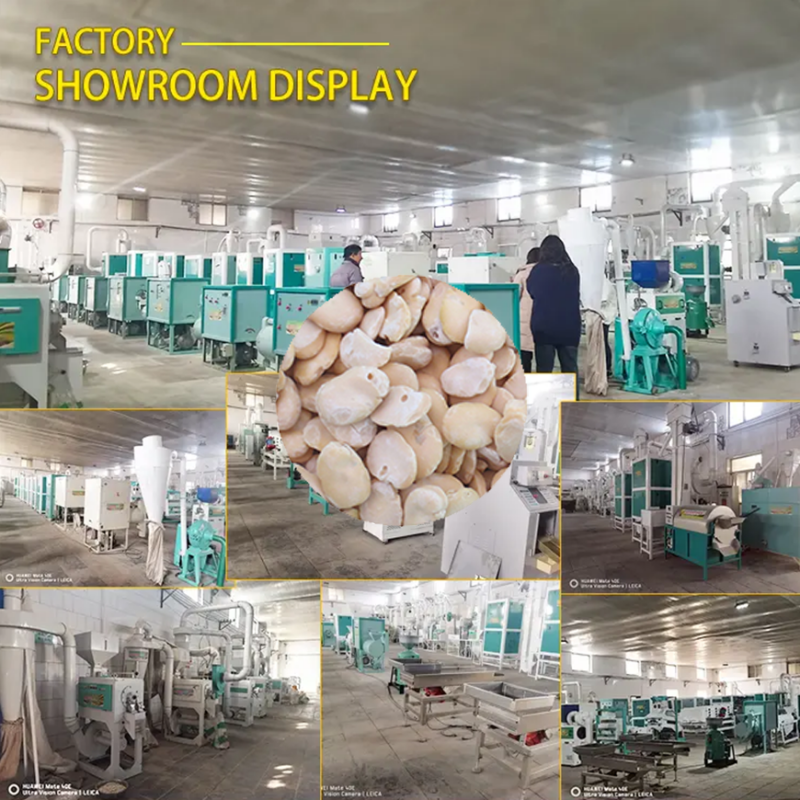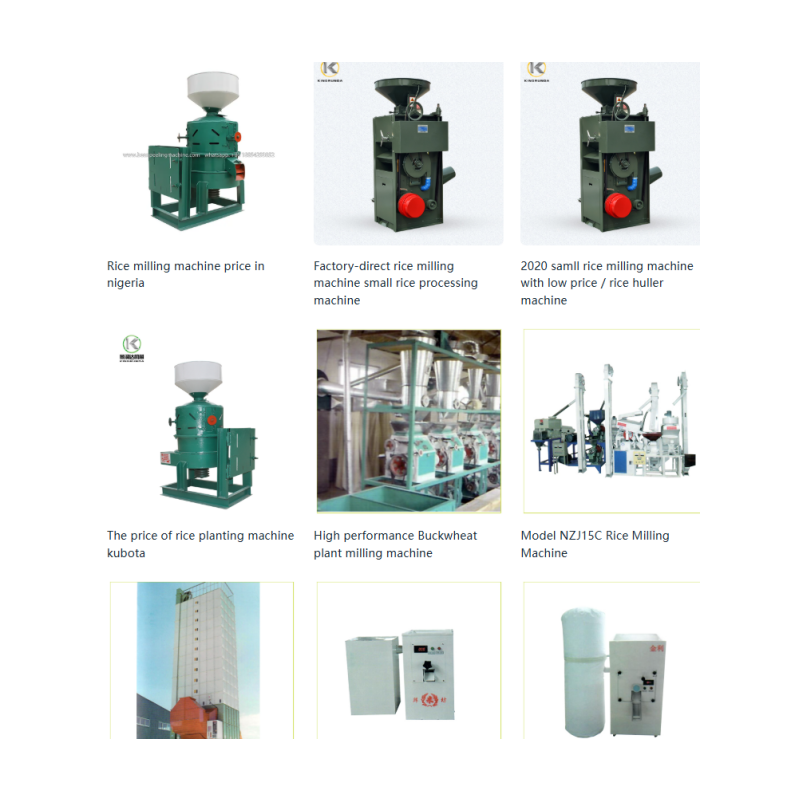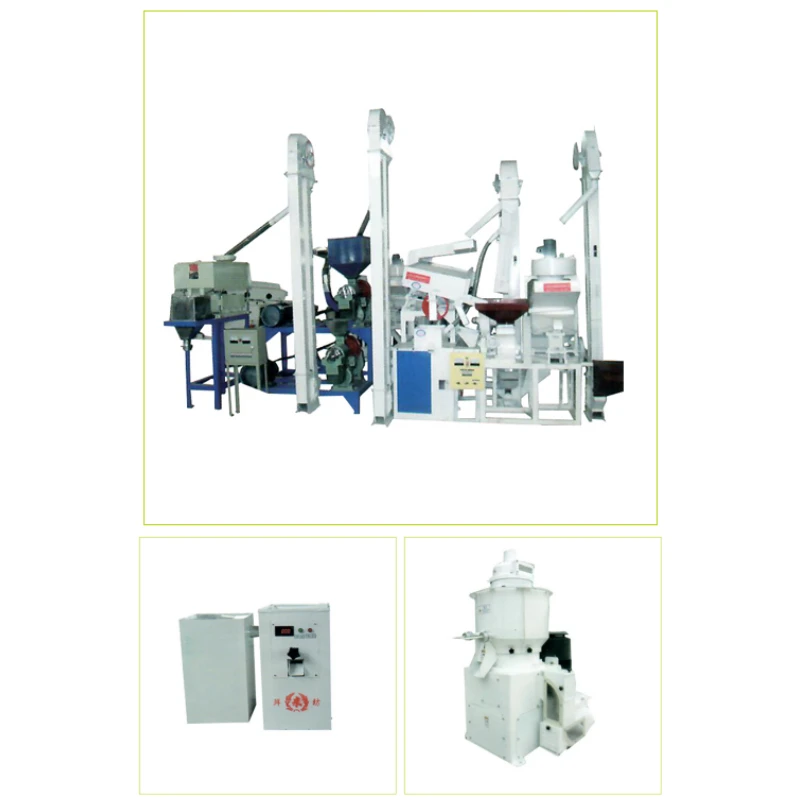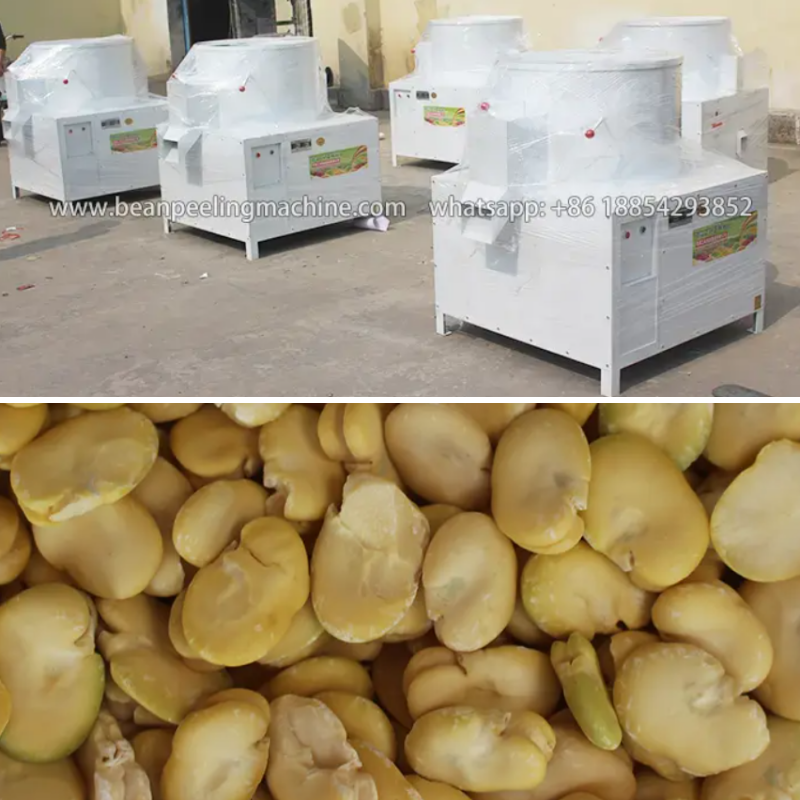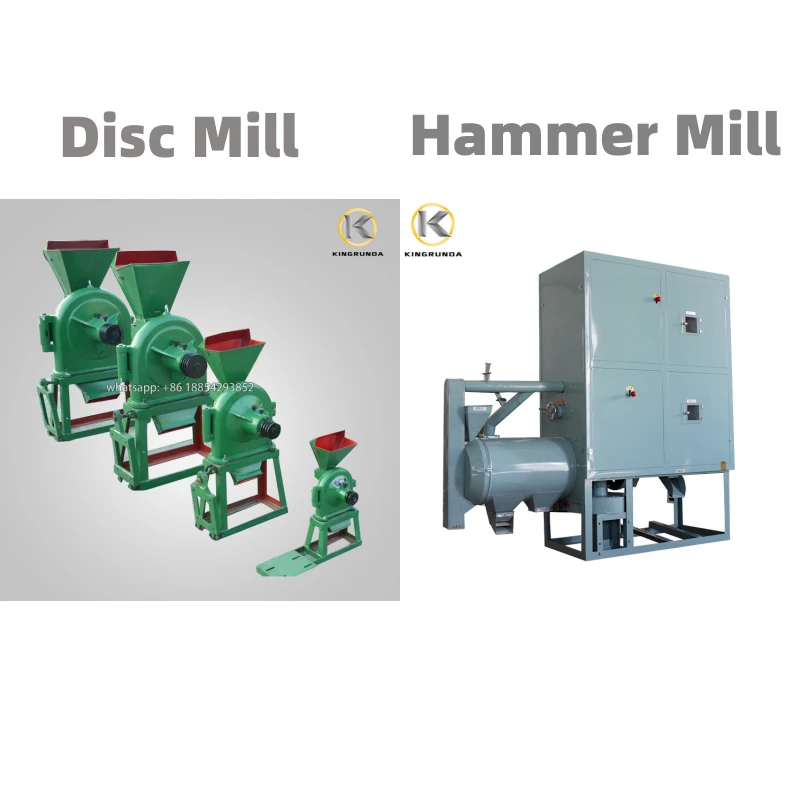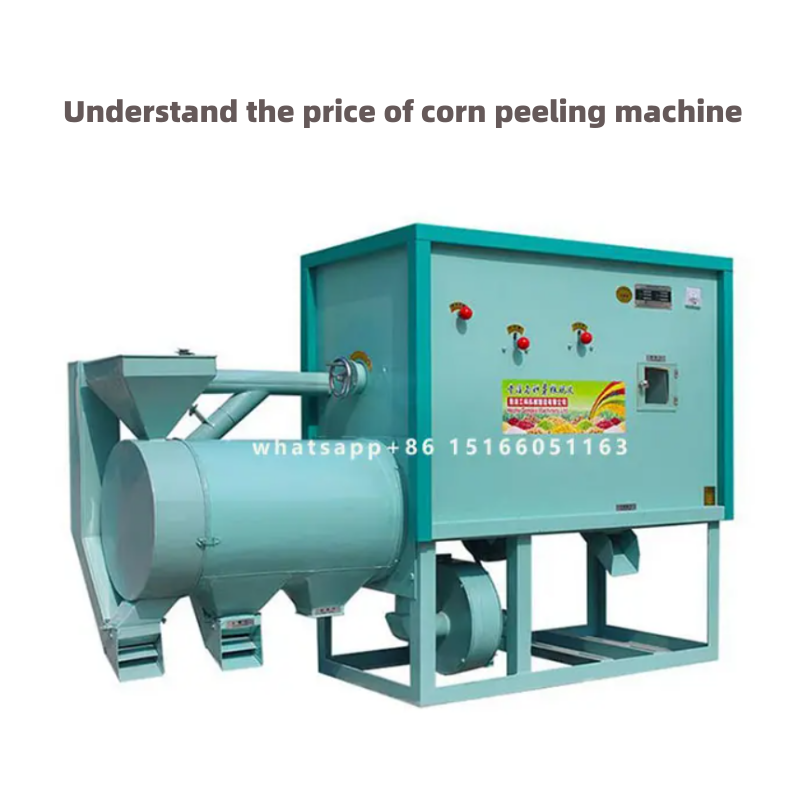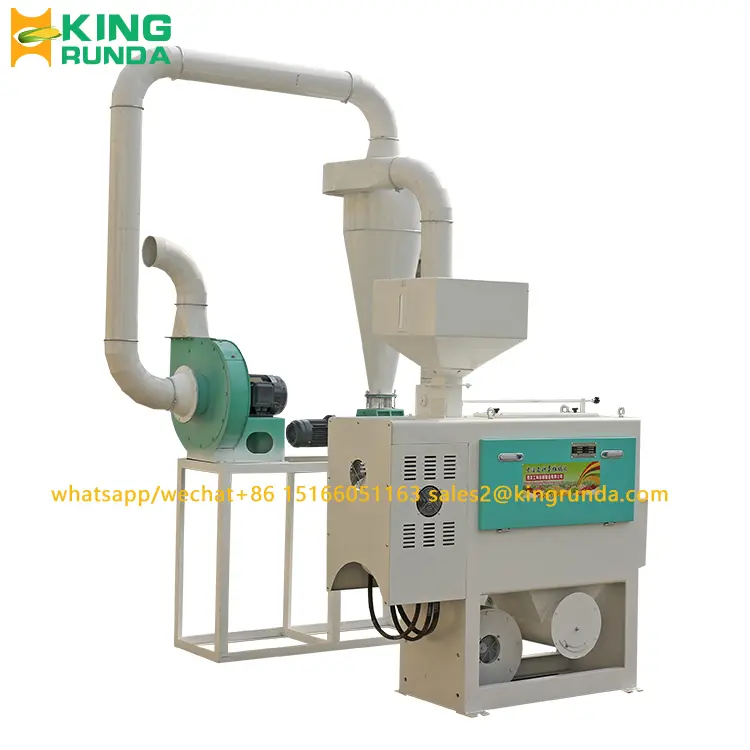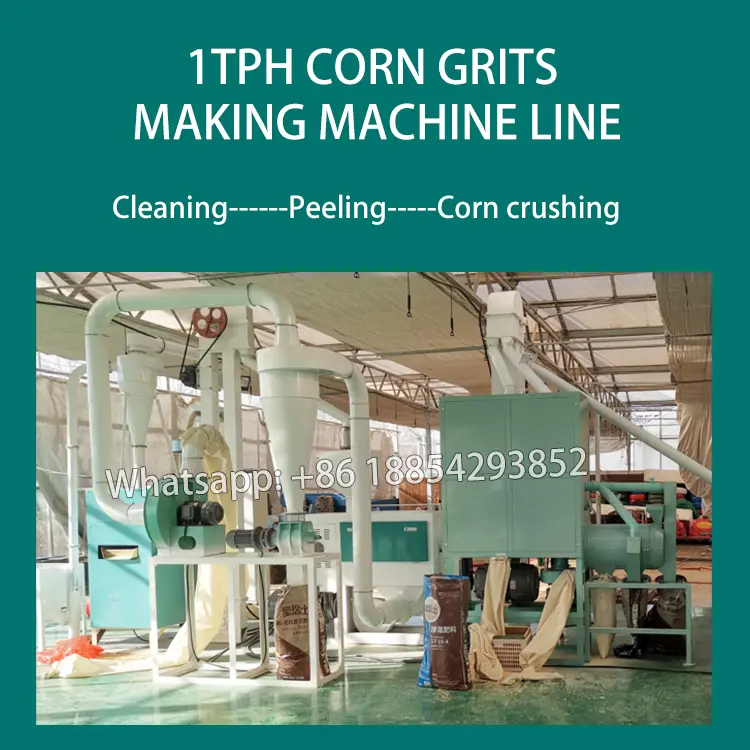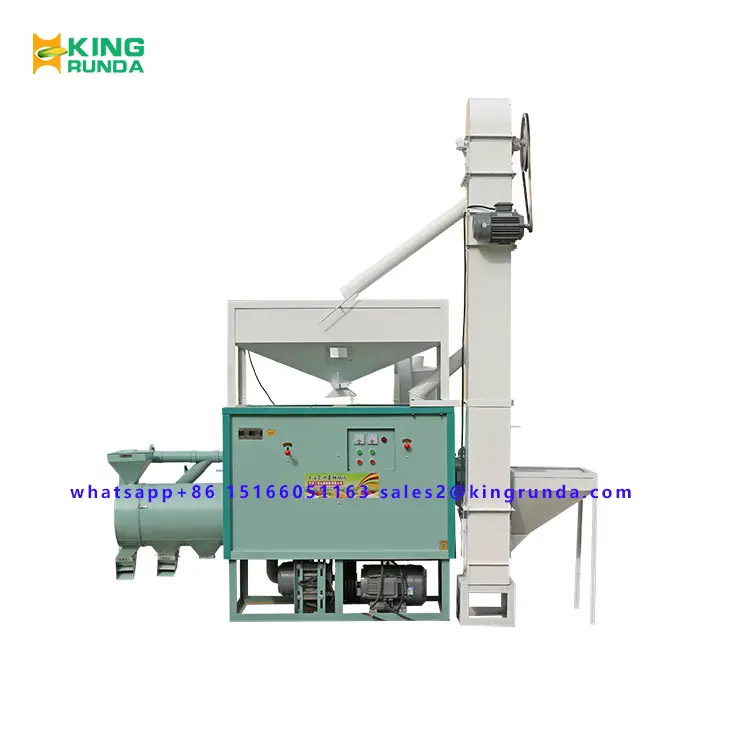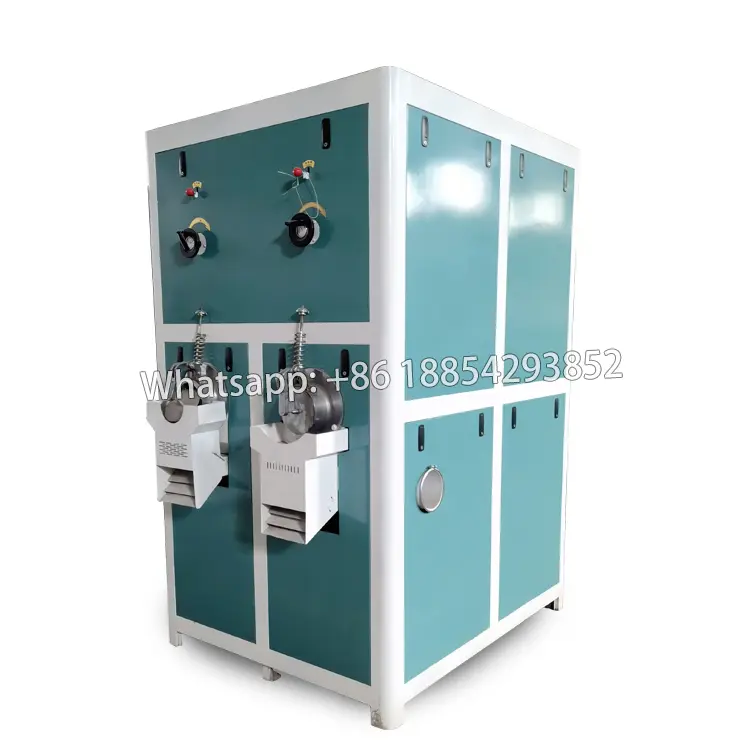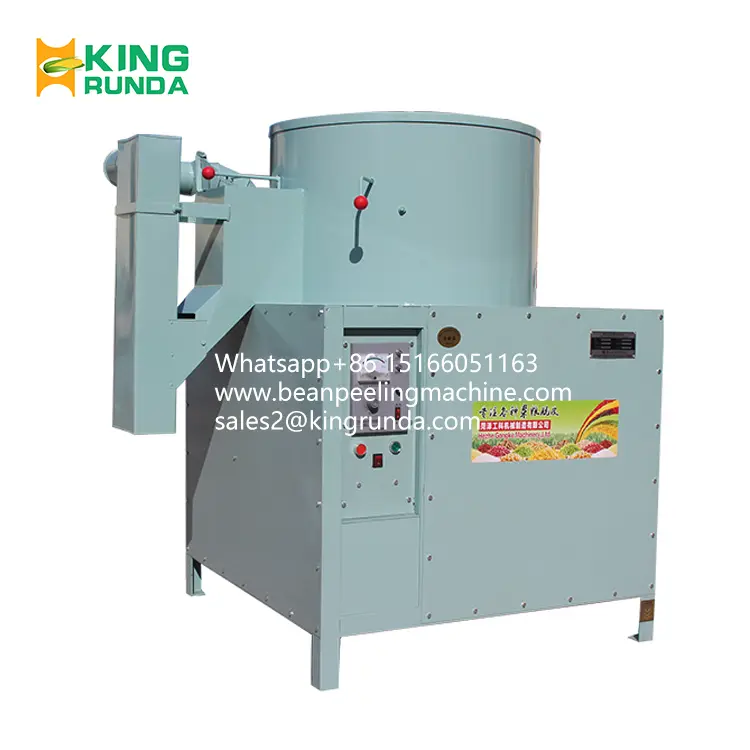Soybean peeling is a crucial preprocessing step in many food, feed, and industrial applications. Whether the goal is to produce soy milk, tofu, soy flour, textured protein, or feed components, a high-quality soybean peeler machine ensures higher yield, smoother operation, and better product taste.
However, with so many models on the market—from small pilot units to high-capacity automated systems—choosing the right one can be challenging. This guide provides an in-depth look at the technical parameters, research data, and selection criteria that help determine the best soybean peeler machine for your production needs.
Why Soybean Peeling Matters
The outer hull of soybean seeds is fibrous, bitter, and often contains anti-nutritional components. Removing this layer delivers several important benefits:
Improved product quality — Peeling reduces beany odor and bitterness, enhancing flavor and texture.
Higher extraction efficiency — In soy milk or protein isolate production, peeled beans allow faster soaking and finer grinding.
Lower energy consumption — With the husk removed, less energy is needed for heating, steaming, or grinding.
Better equipment protection — Less fibrous material means less wear on downstream machinery.
In industrial food lines, the peeling step can increase overall efficiency by 10–15%, while simultaneously improving finished product quality and reducing waste.
Understanding the Soybean Peeling Process
Key Stages in Soybean Peeling
| Stage | Description | Objective |
|---|---|---|
| Cleaning | Removes impurities like dust and stones | Protects internal parts |
| Conditioning | Adjusts moisture content | Softens hull for peeling |
| Peeling/Dehulling | Separates outer skin from kernel | Improves product quality |
| Separation | Removes residue and broken beans | Ensures purity |
| Grinding/Processing | Converts beans into powder, milk, or protein | Final value addition |
The precision of each stage determines the overall product yield and taste. Modern peeling systems combine cleaning, dehulling, and grading in one process to minimize manual labor and contamination.
Types of Soybean Peeler Machines
Comparison of Soybean Peeler Machine Types
| Type | Capacity Range (kg/h) | Power (kW) | Ideal For | Advantages |
|---|---|---|---|---|
| Disk-type Peeler | 300–1200 | 2.2–4 | Small farms | Compact, easy to maintain |
| Cylinder-type Peeler | 500–3000 | 3–7.5 | Medium-scale processors | Uniform peeling, low breakage |
| Air-jet Peeler | 800–5000 | 5.5–11 | Commercial processors | Peeling + separation |
| Multi-functional Peeler | 1000–8000 | 7.5–22 | Industrial lines | Multi-grain use, high efficiency |
Among these, multi-functional grain peelers are the most advanced. They integrate seven functions—peeling, decotyling, crushing, grinding, grading, cleaning, and separating—ideal for soybeans, maize, wheat, and rice.
High efficiency soybean peeling machine for sale
Multi-purpose bean peeling machine
Global Demand and Market Data
The global soybean processing equipment market has been steadily growing, driven by rising consumption of plant protein and processed soy foods. According to 2025 market projections:
| Indicator | 2023 | 2025 (Projected) | Growth Trend |
|---|---|---|---|
| Global soybean processing equipment market | USD 2.3 billion | USD 2.9 billion | +12.8% CAGR |
| Share of peeling & cleaning machinery | 14.5% | 16.2% | Increasing due to quality standards |
| Asia–Pacific demand share | 45% | 49% | Strong growth from food and feed sectors |
(Source: Market Research Future & ResearchAndMarkets, 2025 forecast data)
As processors demand better efficiency and food safety compliance, investment in high-precision peeling and separation machines continues to rise, especially in Asia, Africa, and South America.
Key Performance Metrics of a Soybean Peeler Machine
When evaluating or purchasing a soybean peeling system, engineers typically consider several critical parameters:
| Metric | Description | Target Range / Typical Values |
|---|---|---|
| Throughput (kg/h) | Quantity of raw soybeans processed per hour | Small units: 50–150 kg/h; Industrial: 1–10 t/h |
| Peeling Efficiency (%) | Percentage of hulls removed | ≥ 95–98 % desirable |
| Kernel Breakage (%) | Proportion of beans cracked or split | ≤ 1–2 % |
| Power Consumption (kWh/t) | Energy used per ton of beans processed | 25–35 kWh/t typical |
| Automation Level | Manual, semi-automatic, or PLC-controlled | Depends on scale |
| Material & Build Quality | Stainless steel, wear-resistant alloys | Critical for longevity |
| Maintenance Interval | Frequency of cleaning and part replacement | Every 500–800 hours typical |
Research conducted in 2024 by grain processing institutes found that modern mechanical and air-jet peeling systems can achieve over 95% dehulling efficiency with kernel breakage below 2%, particularly when combined with moisture conditioning and variable-speed control.
Technological Innovations in 2025
Key Technological Trends in Soybean Peeling
| Technology | Description | Benefit |
|---|---|---|
| Air-Jet Peeling | Uses airflow instead of friction | Faster, lower breakage |
| Multi-Grain Integration | Supports soybeans, maize, rice | Flexible operation |
| Smart Controls | Monitors speed, temperature | Precision operation |
| Noise-Reduction Design | Advanced motor housing | Lower operational noise |
| Modular Maintenance | Quick disassembly design | Reduced downtime |
Qingdao Jingcheng Machinery Co., Ltd. has adopted several of these innovations across its product lines. Its air-jet and multi-functional soybean peelers feature automatic load sensors, digital monitoring, and energy-saving motors, ensuring both high performance and environmental compliance.
Core Technologies Used in Soybean Peeling Machines
Modern soybean peeler machines may use different mechanical and pneumatic principles to separate the hull from the kernel:
Friction Peeling System – Uses emery or abrasive rollers to rub off the skin. Effective for dry beans but requires precise pressure control.
Air Jet Separation – Combines mechanical loosening with airflow separation for clean, dust-free operation.
Brush Roller Type – Uses rotating brushes for gentle peeling, minimizing breakage.
Wet Peeling Machines – For soaked beans, typically used in tofu and soy milk processing lines.
Hybrid Peeling System – Integrates friction, suction, and grading mechanisms for consistent efficiency.
A well-designed system often integrates three main components: a peeling chamber, a suction separator, and a grading device that classifies whole, half, and broken beans.
Comparative Performance Table of Peeling Systems
| Type | Typical Peeling Efficiency | Breakage Rate | Best Application | Energy Demand | Maintenance |
|---|---|---|---|---|---|
| Friction roller | 94–96% | 2–3% | Dry beans, feed plants | Moderate | Medium |
| Brush roller | 95–97% | < 2% | Food-grade peeling | Low | Low |
| Air-jet peeling | 97–98% | < 1.5% | Soy milk / protein isolate lines | Moderate | Low |
| Wet peeling | 90–95% | < 1% | Fresh or soaked beans | Higher | Medium |
| Hybrid peeling | ≥ 98% | < 1% | High-end automated systems | Low | Low |
How to Choose the Right Soybean Peeler Machine
Selecting the best machine requires aligning technical performance, operational goals, and total ownership cost.
1. Define Capacity and Production Goals
Estimate your maximum hourly throughput and processing hours per day. Small food processors may only need 100 kg/h, while integrated feed mills often exceed 5 t/h.
6FT-B7 broad bean peeling machine
1TPH&4TPH&8TPH soyabean yellow pea peeling machine with big capacity
2. Match Technology to Your Process
If your product requires extremely clean dehulling (for soy milk, tofu), prioritize machines with air-jet or hybrid separation. For feed-grade beans, a friction or brush system might suffice.
3. Evaluate Peeling Quality
Ask for trial data or product samples showing peeling rate and kernel integrity. The best suppliers offer customized test runs under your bean variety and moisture level.
4. Consider Energy and Maintenance
Choose energy-efficient drives and replaceable wear parts. Machines with hardened liners, modular rollers, and direct-drive motors often have lower lifetime cost.
5. Check After-Sales Support
Reliable manufacturers provide detailed manuals, video training, and guaranteed spare part availability. Long-term stability often outweighs short-term price savings.
6. Plan for Future Scalability
Look for modular systems where capacity can be increased by adding peeling chambers or upgrading drives—this allows growth without replacing the full line.
Why Choose Qingdao Jingcheng Machinery
Choosing Jingcheng Machinery means choosing:
20+ years of expertise in grain and soybean processing
Proven technology across global markets
Customizable design to fit every scale of production
Comprehensive service, from installation to training
Reliable after-sales support and spare parts availability
As a company aligned with the “Belt and Road” initiative, Jingcheng Machinery seeks win-win partnerships and aims to grow with customers worldwide. Its vision is to build a large-scale enterprise that satisfies both employees and clients through trust, quality, and innovation.
Benchmark Data: Small vs. Industrial Peeler Machines
| Specification | Small Machine | Medium Machine | Industrial Machine |
|---|---|---|---|
| Capacity | 50–150 kg/h | 500–1,500 kg/h | 5–10 t/h |
| Power | 1.5–3 kW | 5–10 kW | 20–40 kW |
| Peeling Efficiency | 93–96 % | 95–98 % | ≥ 98 % |
| Breakage Rate | 2–3 % | < 2 % | < 1 % |
| Suitable For | Startups, labs | Food processors | Industrial plants |
| Automation | Manual/semi | PLC control | Fully automated |
| Price Range (USD) | 1,000–3,000 | 5,000–15,000 | 30,000+ |
(Compiled from multiple agricultural machinery databases, 2024–2025)
Features to Prioritize in a High-Quality Peeling Machine
A few design choices make a major difference in performance and durability:
Precision-engineered rollers or blades to maintain uniform gap spacing.
Self-produced brush rollers that ensure consistent cleaning performance.
Low vibration design for reduced noise and longer motor life.
Integrated dust and hull collection system to keep the workshop clean.
User-friendly control panel with adjustable speed and real-time data display.
Durable stainless-steel construction, meeting food hygiene requirements.
A growing number of global buyers now demand energy-efficient, fully enclosed machines that meet ISO 9001 and food-grade certification standards. Jingcheng Machinery fully met the requirements.
The Role of R&D and Patented Innovation
The best peeling equipment often comes from manufacturers who combine decades of mechanical expertise with modern R&D. Engineering teams composed of senior technical specialists focus on precision machining, wear resistance, and fluid dynamics optimization.
For instance, continuous improvements in roller geometry, airflow direction, and multi-stage separation have boosted peeling efficiency from around 90% a decade ago to nearly 99% today, while reducing energy consumption by up to 20–25%.
Jingcheng Machinery is backed by multiple patent certificates – a sign of deep engineering prowess and continuous product improvement.
Global Service Capability and Market Reach
A dependable equipment supplier isn’t defined solely by machinery quality but also by its ability to serve customers worldwide.
Jingcheng Machinery maintains long-term partnerships with over 20 countries and regions, including the United States, the United Kingdom, Spain, Sweden, India, Sri Lanka, Bangladesh, Vietnam, Indonesia, and Nigeria.
These relationships are built on:
Responsive technical consultation and customization.
Timely shipment and spare-part availability.
Ongoing after-sales training and system upgrades.
Such a track record demonstrates our global adaptability and customer satisfaction focus—key factors when selecting a reliable soybean peeler supplier.
Integration with Broader Grain Processing Systems
Soybean peeling machines are often part of a comprehensive grain machinery ecosystem that includes:
Destoners and Vibrators for raw material cleaning.
Flour and Rice Milling Machines for post-processing.
Maize and Wheat Milling Equipment offering multi-function capabilities (peeling, grading, crushing, and grinding).
Puff Snack and Extrusion Lines that convert peeled soybeans or grains into snacks.
Vegetable Cleaning Machines designed for root crops and seafood.
Jingcheng Machinery can provide turnkey project solutions – from a single peeling machine to a complete processing line – saving buyers time and ensuring system compatibility.
Future Trends in Soybean Peeling Technology
The next decade will bring major advances in peeling technology:
AI-driven process control — Sensors continuously monitor moisture, kernel size, and friction, adjusting parameters automatically.
Energy recovery systems — Reusing airflow and friction heat to reduce consumption.
Eco-friendly material choices — Use of recyclable alloys and water-saving designs.
Modular digital architecture — Plug-and-play connectivity for data tracking and predictive maintenance.
IoT-enabled monitoring — Allowing operators to remotely diagnose performance and schedule part replacements.
These innovations align with global sustainability goals while enhancing yield consistency.
Conclusion: A Reliable Partner for Efficient Soybean Peeling
Choosing the best soybean peeler machine requires a balance between performance, reliability, and total ownership cost. Look for a supplier that combines:
Over two decades of experience in grain and food machinery design.
Patented technologies ensuring durable and efficient peeling.
Global service partnerships across multiple continents.
Comprehensive machinery lines, from peeling to milling and extrusion.
A commitment to continuous innovation and customer satisfaction.
Jingcheng Machinery doesn't just sell machines; we provide complete, long-term processing solutions customized to your needs. With advanced engineering technology, extensive industry coverage, and strong after-sales service, we help customers around the world achieve consistent, high-quality soybean peeling performance and sustainable yield growth.
If you need a bean peeling machine, please contact Jingcheng Machinery for more details.
Maybe you also want to know:
